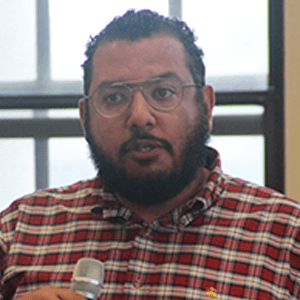Last Updated on October 19, 2023 by BVN
Will Simpson
This week, we saw a narrative that dominated 2022 get thoroughly debunked. Last year, political candidates, and much of the media that covers them, practically shouted about a murder and crime wave.
The FBI just released its 2022 data. Homicides are down. Violent crime is down. While property crime is up, it’s still well below a decade ago.
Violence is far too complex to point to a single reason for trends. But we shouldn’t let this moment pass without recognizing the historical recent investments in community-centered public safety.
Communities are boldly asserting what they need to be safe—and building solutions to achieve it. The work is producing tangible reductions of violence.
Unfortunately, our backing of these transformative strategies hasn’t matched their potential. Our nation’s response to violence has always been punishment, which intensifies the root causes of violence and acts as a multiplier of harm. We have poured money into policing and prisons for years; isn’t it time to fully support successful community-driven strategies?
California recently took a stride in this direction when Gov. Newsom signed AB 28, which will tax manufacturers of guns and ammunition, sending $75 million into community-centered public safety.
That amount might feel substantial until you contrast it with how our country funds public safety: a 2019 DOJ report showed spending of $300 billion annually on police, prosecutions, prisons, and supervision across the entire justice system.
Meanwhile, all levels of government have invested approximately $250 million annually, over the past two years, into community-centered strategies, a stark contrast in how we prioritize and invest in safety.
Given the proven success of community initiatives against the harms of traditional strategies, we have to wonder: Could we be investing differently and have greater impact?
These community initiatives take many shapes. The solutions to violence require a collective strategy that addresses the root causes. Right now, much of that $250 million goes to community violence intervention (CVI) — and not nearly enough to organizations on the ground.
This historic investment in CVI is a critical step to achieving safety in all of our communities. But it is just the “tip of the spear,” according to Eddie Bocanegra, senior advisor in the U.S. Office of the Assistant Attorney General. He’s pointing to a larger thinking — our investment needs to expand beyond singular efforts. Our communities deserve more than just CVI.
A more diversified approach is having undeniable success. Look at Newark, NJ, where Mayor Ras J. Baraka has launched initiatives that center community in formal public safety strategies. One result: a 60-year low in homicides. Organizations like the Newark Community Street Team, The HUBB Arts and Trauma Center, and New Direction are aligning efforts in allyship with the city’s Office of Violence Prevention and Trauma Recovery to make community needs the foundation of its public safety efforts.
In Baton Rouge, LA, a community that for years has been one of the country’s most violent cities, community and elected officials have united to truly address violence as a public health issue. They are investing in community-driven violence intervention and prevention strategies, leading to double-digit reductions in homicides, shootings, and violence this summer.
It is vital that we create a comprehensive approach to building safety that includes reentry programs, non-carceral crisis response teams, diversion initiatives, youth programs that deliver opportunities, domestic violence initiatives addressing domestic violence, and substance abuse or misuse support programs.
Conventional policing, which is largely reactive, relies predominantly on punitive responses. This approach fails to address the underlying causes of community violence and harm. But cities like Newark, Baton Rouge, and many others nationwide are seeing significant gains in public safety by tackling root causes of violence head on: poverty, the housing crisis, substance abuse, and much more.
As our understanding of safety evolves, we must prioritize and invest in these community-centered interventions that focus on health, well-being, and opportunities for all.
Our goal of a holistic and non-punitive approach to safety is becoming a reality in policy and implementation. U.S. Rep. Cori Bush’s “People’s Response Act” embodies this changing landscape, redefining our thinking of public safety in our country by placing community well-being over punishment.
Coalitions like the Community Safety Working Group and Invest in Us are at the forefront in advocating for federal policies that include a wide-ranging view of safety. Their endeavors highlight the fact that this work transcends isolated efforts. The goal is a cohesive strategy to create safety centering strategies that resonate with the diverse communities they intend to serve.
As we move forward toward true community safety, we stand at a defining moment. The success stories attest to the real benefits of putting community at the heart of our safety strategies.
This shift requires more than a “commitment.” It requires a profound reevaluation and investment. Our shared vision of a more equitable and secure future demands no less.
Will Simpson is Director of Violence Reduction Initiatives for Equal Justice USA




